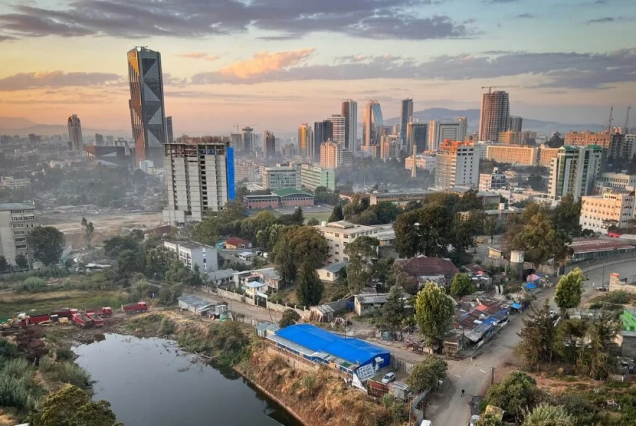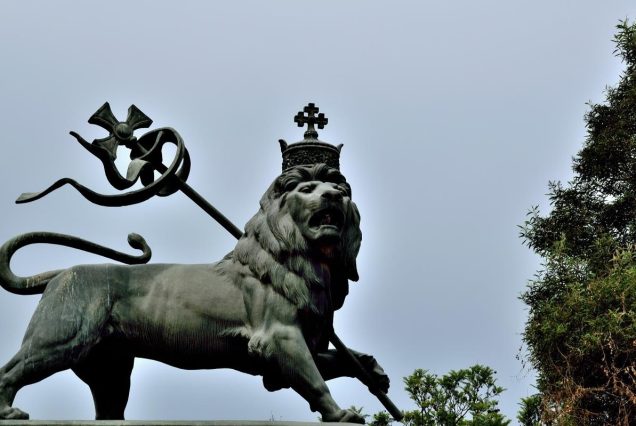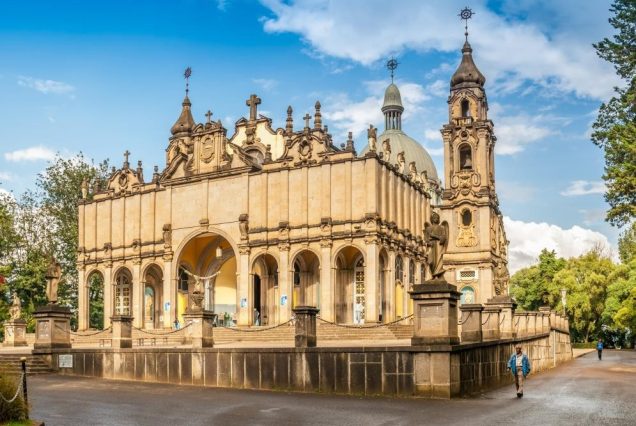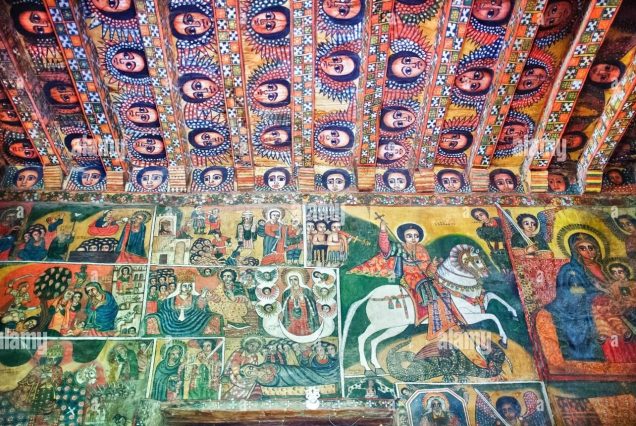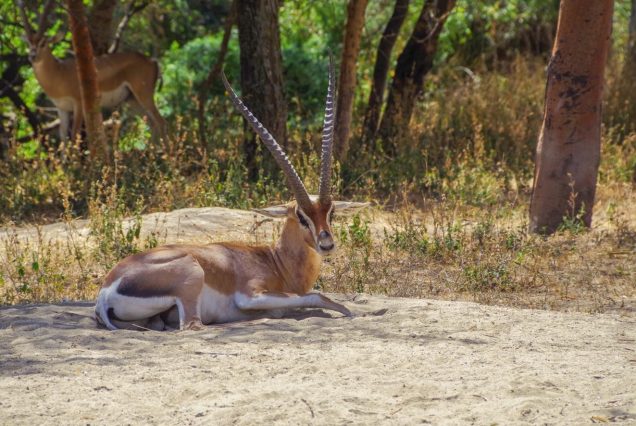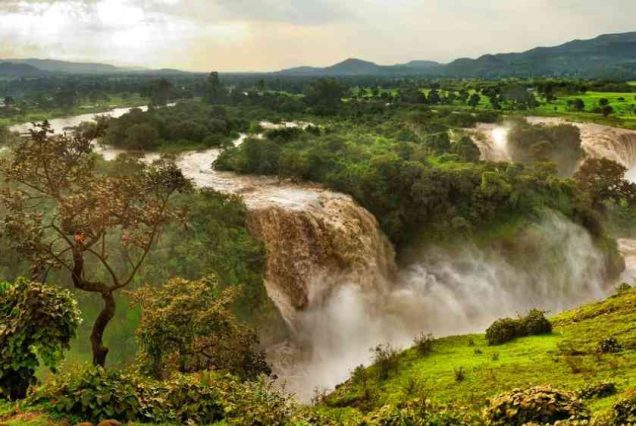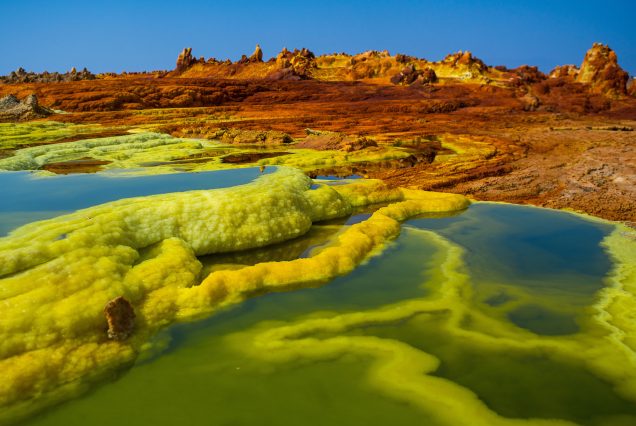Ethiopia. Classic Ethiopia and The Bale Mountains Tour. 14 days.
Addis Ababa is the largest city of Ethiopia and its capital city at the same time. Addis Ababa, which in Amharic means “a new flower”, is located in the center of the country, 2100- 2300m above the sea. It is one of the highest-located capital cities in the world. Here you can do various activities depending on your available time.
Bale Mountains National park, a journey that is both scenic and exciting. Located in the Oromia Region of southeast Ethiopia, the Bale Mountain National Park is one of those landscapes that keeps you guessing.
From volcanic peaks, to glacial lakes to swamps, it’s not a place that runs out of things to show you.
The park is rich in birds and endemic animals like the Nyala. It also has all the levels of vegetation from grasslands to thick forests. More than 60 mammal species and 260 birds have been found at the Bale Mountains National Park. This park is the perfect spot for trekking and horseback riding. You will be able to spot the endemic Mountain Nyala, the Menelik Bushbuck and the Ethiopian wolf and explore lakes, waterfalls and deep gorges. You can either explore the park on foot with a guide or on horseback. The best time to visit the park is November to March but be prepared as the nights can get to below freezing temperatures.
Discover the mysteries of Ethiopia, a land of deep traditions dating back more than 3,000 years, on this exclusive trip explore the wonders of Lalibela, Gondar and Bahir Dar with the unspoiled nature of the Simien Mountains National Park, past stunning scenery of jagged peaks and panorama over the lowlands.
| DBL SHA | 3* BB | 3*HB | 3*FB | 4* BB | 4*HB | 4*FB | 5* BB | 5*HB | 5*FB |
|---|---|---|---|---|---|---|---|---|---|
| 2 pax | 5045 | 5185 | 5325 | 5545 | 5685 | 5825 | 6419 | 6559 | 6699 |
| 3 pax | 4440 | 4580 | 4720 | 4940 | 5080 | 5220 | 5810 | 5950 | 6090 |
| 4 pax | 4250 | 4390 | 4530 | 4750 | 4890 | 5030 | 5619 | 5759 | 5899 |
| 5 pax | 4053 | 4193 | 4333 | 4550 | 4690 | 4830 | 5420 | 5560 | 5700 |
| 10 pax | 3740 | 3880 | 4020 | 4240 | 4380 | 4520 | 5119 | 5259 | 5399 |
Included/Excluded
- All accommodation as detailed with a room sharing & private facilities on a chosen meal plan
- Airport welcome, transfer to the hotel
- Cultural activities mentioned in day by day
- All entrance fees as per the program
- Other activities Coffee ceremony, and Honey wine drinks (Tej)
- Traditional farewell Dinner in Addis Ababa
- Ethiopian Visa fee
- International and domestic flights
- Personal insurance
- Personal expenses
- Tour Leader Charge and Gratitude
Tour Plan
Addis Ababa is the largest city of Ethiopia and its capital city at the same time. Addis Ababa, which in Amharic means “a new flower”, is located in the center of the country, 2100- 2300m above the sea. It is one of the highest-located capital cities in the world. Addis Ababa is a pleasant city with interesting museums and one of the largest open-air markets in Africa, “Mercato”.
Addis Ababa is Africa’s diplomatic capital with headquarters for the Organization of African Unity and the United Nation Economic Commissions for Africa.
On your arrival at Addis Ababa Bole International Airport, after clearing immigration and customs welcome by your guide and get transferred to your hotel.
Depending on your arrival time it is possible to arrange sightseeing in Addis Ababa with a national guide and this includes;
A visit of the National Archaeological Museum; ranks among the most important museums in sub- Sahara Africa. It housed the 3.5 million-year-old bones of Lucy. Lucy is believed to be the ancestor of all Human kind. It has lots of ancient exhibits that reflect the importance of Ethiopia as the „Cradle of Mankind‟. Its historic room features finery worn in the wars, such as crowns, weapons, and pictures of wartime heroes and kings.
Visit St. George’s Cathedral (Giorgis Cathedral) which lies at the north end of Churchill Rd. Designed in the traditional octagonal shape, this cathedral was built in 1896 to commemorate Ethiopia’s victory over the Italians at the Battle of Adwa. The Cathedral houses the work of Afewerk Tekle, the renowned Ethiopian artist responsible for the stained glass windows of the Africa Hall and also houses a small museum in the compound.
And a visit of Merkato; the Largest open Market in Africa; where virtually every possible commodity is on sale, from livestock to computers. It is closed on Sundays & for a visitor good at bargaining, there is a huge selection of Ethiopian arts and crafts.
Accommodation: Best Western Plus Addis Ababa Hotel/Hyatt Regency Addis Ababa Hotel/ Sheraton Addis Luxury Collection
Road transfer Addis Ababa to Langano 200kms/4hrs via Ziway.
Following your hearty breakfast you will drive to Lake Langano, has a beautiful white sand beach.
Langano is located in the Great Rift Valley at an elevation of 1,585 meters to the east of Lake Abijata.
According to figures published by the Central Statistical Agency, Lake Langano is 18 kilometers long and 16 km wide, with a surface area of 330 square kilometers and a maximum depth of 46 meters.
On your way visit Lake Ziway, the largest of the northern group of Rift Valley Lakes. It lies about 1.5km east of the town of Ziway, it is best known for its bird life. Visit the Castel Winery garden & wine testing at Ziway
Relax by Langano’s fresh breath taking atmosphere. Lake Langano is bilharzias and crocodile free, and visitors can go for a swim, walk along the shores of the lake or go bird watching in the forests along the lake shores.
Following lunch visit Abijata-Shala National Park. “Lakes Park” which was once reputed as one of the bird watchers ground in Africa. It was 887 square kilometres in area out of which 482 square kilometres is covered by water of Lake Abijata and Shala. This park used to have about 31 species of mammals such as Spotted Hyena, Golden and Black Backed Jakals, Olive Baboon, Grant‟s Gazelle, etc., and 367 species of birds. But currently due to devastated ecology and extreme decrease of Abijata Lake water, one can see only less concentration of flamingos.
At the park’s head quarter one can easily observe (watch) a flock of male and female ostriches and some gazelles. Lake Shala, which is separated to the south from Lake Abijata by a strip of land has a delightful view for its deep blue color with excellent reflections of the magnificent western hills. At the north eastern shore of the lake Shala, one can be impressed by a tumbling cascade of hot springs and smoke of vapor that rush out down to the bay.
Lake Chitu: is a small Crater Lake offers a spectacular view of colony of flamingos feeding on blue- green algae.
Accommodations: Sabana Lodge/Hara Langano Lodge /Bishangari lodge
Dinsho is the head Quarter of the Bale Mountain National park inhabited by Oromo people look for the three of the endemic mammals: Menelik’s Bushbuck, Semien Fox, and Mountain Nyala. And birds Blue-winged goose, Spot-breasted lapwing, Abyssinian long claw, Wattled ibis, Black-headed siskin, Rouget‟s rail. Other mammals you can expect to see here are warthog, boor reedbuck, Gureza monkey, as well as several other water and grassland birds After your picnic lunch or lunch in local restaurant, make a short hike along the woodland part of the national park chance to spot endemic Mountain Nyala, Menelick Bushback, Bohor Reedbuck and bird species. Then transfer to the lodge for the overnight stay.
Road transfer Langano to Bale Mts. 310kms/4 -5hrs via Dinsho.
Accommodations: Bale Mts. Lodge
Full day visit with picnic lunch on Sanetti Plateau, 4000masl, with its striking Afro-Alpine flora, such as the Giant Lobelia and Red Hot Poker. It is the best place in Ethiopia to see the Simien Wolf, the rarest canid in the world, while the huge rodent population, including the endemic Giant Mole Rat, supports a variety of raptors.
The rare Wattled Crane is often seen, while there are a good number of the Spot-breasted Plover. Tullu Dimtu at 4377 m is the second highest mountain in Ethiopia and then return back to the Harenna forest and birding around the lodge here one comes encounter with olive baboon, gureza monkey, bush buck, bush pig, leopard, lions and wild dogs.
Accommodations: Bale Mts. Lodge
Drive to Goba and catch your flight back to Addis Ababa and connect your flight to Bahir Dar. Bale Goba ET176@1030-1125 & ET 144 @1230-1340, Bahir Dar via Addis Ababa.
Bahir Dar is the capital of the Amhara region situated on the shores of Lake Tana, the largest lake in the country. Bahir Dar is one of the best well-planned cities in Ethiopia. Bahir Dar means “by the side of the sea” after check into your hotel Leave for the visit of the Blue Nile Falls, locally known as”Tissiat” – which means “Smoking Water.” The Falls are 328 feet wide and the water plunges some 150 feet, giving rise to picturesque stream clouds and rainbows. Blue Nile Falls is 32kms from the city. On a clear sunny day you can walk for about 30min walk to the base of the falls. Meet with the locals around for a short coffee break. Cotton spinning is the most famous activity in this area.
Following lunch embark on a cruise on Lake Tana, the largest highland lake in Ethiopia. Lake Tana is also the source of the Blue Nile, a fact that may explain many of Ethiopia’s links with the ancient world. Even today, the papyrus tankwa that sail the lake bear a striking resemblance to the boats of Ancient Egypt.
Visit the Zeghie Peninsula & the locals, known for its 14th century, round, grass roofed churches and their magnificent wall murals, the Azoa Mariam and Ura Kidane Mehret churches, its architectural style is a typical example of the Ethiopian Orthodox Church having mud plastered round wall with conical thatched roof. Ura is known especially for its fine frescoes, manuscripts, ecclesiastical objects like crown of various emperors dated from the 14thc, processional crosses of silver& gold, silver-drum and royal vestments, and an impressive display of illuminated bibles written in Ge‟ez, the religious language from which Amharic is derived. And then walk through dense forest with lots of bird life & coffee plantations.
And in late afternoon enjoy the sightseeing in Bahir Dar – have a look around the city of Bahir dar including Agelgil Market & Bazawit Hill Top which offers a spectacular view of the surrounding, the city, the islands of Lake Tana and Blue Nile leaving the lake. With some luck hippopotamus colonies can be seen at the bottom.
There is the palace of Emperor Hailesillasie built in the 1960s which you could see from the outside.
Accommodation: Kuriftu Resort & Spa / Avanti Blue Nile Resort
Have a hearty breakfast and head to the magnificent Simien Mts. National Park via Gondar. Gondar was once the capital and commercial centre of Ethiopia from the 17th to mid-19th century; you will have lunch in Gondar city and from here you’ll proceed to the Simien Mountains National Park.
Road/ Surface transfer 290kms/5hrs.
The Simien Mountains National Park is situated about 100km north of Gondar and is one of Africa’s largest mountain ranges. At least a dozen of the peaks are over the 4,000m mark, including Ras Dashen, the highest peak in Ethiopia. The western side of the range, excluding Ras Dashen, was designated as the Simien Mountains National Park in 1969, and the entire range was listed as a UNESCO World Heritage Site in 1979.
The Simien range consists of several large plateaus divided by large river valleys. The spectacular views stretch north towards Eritrea. Three of Ethiopia’s endemic large mammals are residents of the Simiens. The Ghelada Baboon is the most common with an estimated population of 7,000. They are often to be seen grazing in herds of up to 400 individuals. There is also the rare Ethiopian Wolf, with a population of no more than 50 that exists high up on the mountains slopes of Ras Dashen, Bwahit and Kidus Yared. Finally there are 600 Walia Ibexes still surviving. Non-endemic mammals include Klipspringer, Bushbuck, and the Common Jackal. Flora includes St John’s Wort and an array of Aloe.
Visit Sankaber the first camp sight of the Simien Mts. Here you will find one of the most spectacular mountain scenery in Ethiopia. Stop to watch Ghelada Baboons and observe their foraging habits and take a short walk to a waterfall (the ground here is uneven).
Accommodation: Limalimo Lodge / Simien Lodge
Drive to Jinnbar falls & Hyena Meda to enjoy the beautiful morning scenic view of the mountains and from Hyena Meda climb the Immet gogo /3926m/and have a wonderful view from here. Then proceed to Chennek, 3,620m, home to endemic Walia Ibex, as well as Klipspringers and Bushbucks. Chennek is one of the most spectacular spots in the Simien Mountains and the surrounding slopes are thick with giant Lobelias and Afro-Alpine scrub. A picnic lunch will be arranged for you at a scenic spot.
A sighting of the Walia Ibex is not guaranteed and is usually dictated by the road conditions, because these animals generally inhabit an area at least 60km from the lodge. Visit the Argin village, in the heart of the park a few kilometers southwest of Chenek. You will practice baking injera, beer making, coffee ceremony, Hair do or any activities by the locals. Revenues go straight to the local community.
Accommodation: Limalimo Lodge / Simien Lodge
Today you will drive to Gondar 185kms/3hrs. Enjoy the scenic view & real country side feeing on your way.
Gondar “the Camelot of Africa,” is the medieval royal city, distinguished by its castles and imperial compound and by its churches, particularly Debre Berhan Selassie, the walls and ceiling of which are completely covered in murals – the angels‟ faces on the ceiling have become a common motif in Ethiopian design.
Gondar was founded by Emperor Fasiladas in 1636 as the royal capital of Ethiopia. For several centuries Ethiopia had been ruled from a succession of temporary capitals and Fasiladas recognized that a permanent capital might help provide greater internal stability. By the time of Fasiladas’ death in 1667 Gondar was the largest and most important city in the empire. It retained its position as the capital of Ethiopia for 250 years, though this status was largely nominal from the late 18th century onwards. Gondar has now become one of Ethiopia’s largest and most impressive cities, with its walled Royal Enclosure.
Gondar’s most famous monuments are its exceptionally well preserved 17th-century castles. The largest and best is that of King Fasilidas. It is a stone-built construction with round turrets and wooden balconies. The king also built a remarkable bath a mile or so outside of town known as the „Pavilion of Delight‟. The Bathhouse of Fasil at which thousands of Ethiopians celebrate Timekat festival every January. This whole complex of buildings is unique in Ethiopia and unlike anything found elsewhere in Africa.
After lunch visit the Royal Enclosure or Fasil Gibbi, encompasses the castles of various Gondarene emperors.
The Fasiladas Palace; the Quskuam Church (believed to be the home of famous explorer James Bruce during the 1770‟s). After 2-km drive from the town centre visit the bath of King Fasilides. The pool is now the central stage on which the Timkat or Epiphany festival is celebrated in Gondar.
Debre Berhane Selassie church with its remarkable walls and ceiling completely covered with murals – the angels‟ faces on the ceiling have become a common motif in Ethiopian design.
On your way to Gondar visit Project Ploughshare Women‟s Crafts Training Centre – Located 5km from Gondar, this centre is focussed on helping disadvantaged women rekindle local pottery traditions, along with
Amhara weaving and basketry. Founded in 1993, the aim of the project is to help single mothers who have lost their husbands as a result of HIV/Aids, war, natural disasters or divorce. With an average of 4 to 5 children to support, the proceeds of the products which are sold to the local community and tourists are a vital source of income.
Ras Gimb Museum – Likely built in the 17th century, this attractive palace, now converted into a museum, once served as a retreat for Haile Selassie; a residence for Italian generals; and as a torture chamber for the Derg.
Tonight you will have a family dinner mostly Ethiopian local foods prepared with the help of the group participation, like in shopping at local palaces, cooking… serving…. We can cook varieties of organic fresh foods from the market. We include halal foods, cooked vegetables….
Tasting Ethiopian Foods – a meal ever made such an impact that it‟s become forever seared into your memory? The colors, the presentation, the way the bread felt on your fingertips. It made such an impression that you still think about it twenty, even thirty years later.
Accommodation: Gondar Hills Resort /Haile Resort Gondar /Goha Hotel / Maykelo Lodge / Zoble Hotel
Following your breakfast transfer to the airport for your flight to Lalibela ET 122 @10:10 GDQ – 10:40 LLI.
The small town of Lalibela, which is home to one of the world’s most astounding sacred sites, comprising eleven medieval rock-hewn churches, each carved entirely out of a single piece of stone. Lalibela, the „New Jerusalem‟, was built by King Lalibela „with the help of angels‟ in the 12th century, and is a UNESCO World Heritage Site with its eleven rock-hewn churches. Perched among wild craggy mountains and vast rocky escarpments, there is a stark cathedral-like grandeur to Lalibela. The houses of Lalibela are of a design unlike anywhere else in Ethiopia, two-storey circular stone constructs that huddle in an amorphous mass over the steep slopes on which the town is built.
The rock-hewn churches are large and several are more than ten metres high. Because they are carved below ground level, they are ringed by trenches and courtyards, the sides of which are cut into with stone graves and hermit cells and connected to each other by a tangled maze of tunnels and passages. The eleven rock churches, thought to be at least 200 years old, are divided into two groups and are visited by foot. The steps are uneven and walking around can require a little agility.
After the decline of the Axumite Empire, lamenting their lost grandeur, Ethiopia’s rulers retreated with their Christian subjects to the lofty escarpment of the central uplands. There, protected by mountain battlements more formidable than anything the hand of man could fashion, they were able to repel an increasingly expansionist and militant Islamic army by trapping and confusing their enemies in the precipitous maze of valleys that intersects the high plateau. Inevitably, a fortress mentality took root: an intense suspicion of the motives of strangers, a hatred of intrusion and interference, and a protective secrecy. From roughly the seventh to the 16th century AD, the Ethiopians were encompassed by the enemies of their religion, and were described by the British historian Edward Gibbon as having “slept for near a thousand years, forgetful of the world by which they were forgotten”. It is true, moreover, that in holding back those who sought to destroy their faith, and the highlanders also effectively cut themselves off the evolving mainstream of Christian culture. However, this is the only sense in which they slept. Their unique, idiosyncratic civilization was otherwise very much awake, a singular and spirited affirmation of the creative power of the human intellect.
Lalibela, previously known as Roha, was named after the king. The word itself, which translates to mean ‘the bees’, recognizes his sovereignty and the people of the region still recount the legend. Lalibela was born in Roha in the second half of the 12th century, the youngest son of the royal line of the Zagwe dynasty, which then ruled over much of northern Ethiopia. Despite several elder brothers, he was destined for greatness from his earliest days. Not long after his birth, his mother found a swarm of bees around his crib and recalled an old belief that the animal world foretold important futures. She cried out: “The bees know that this child will become king”. At the end of the 12th and beginning of the 13th century, King Lalibela of the Zagwe dynasty built a series of rock-hewn churches. There are eleven churches in the town named after him, with others in the surrounding countryside. All are still in use today.
It is estimated that the churches took 25 years to construct. For the kingdom based around Roha to have kept a large work force engaged in economically unproductive labour for such a long period means that it disposed of a large economic surplus and was very wealthy. The area was clearly fertile and agriculturally productive, whereas now deforestation and other forms of ecological degradation have made it barren. This area is particularly prone to drought today.
After lunch leave to visit the north-west cluster of churches consists of Bet Medhane Alem, Bet Maryam, Bet Meskel, Bet Danaghel, Bet Debre Sina, and Bet Golgotha. Also included in this tour is the isolated monolith of Bet Giyorgis (the Church of St George). Bet Medhane Alem is the largest monolithic rock-hewn church Take a part in a traditional coffee ceremony. Ethiopia’s coffee ceremony is an integral part of the social and cultural life. It is an important cultural ritual that’s been passed from generation to generation. An invitation to attend a coffee ceremony is considered as a mark of friendship or respect and is an example of Ethiopian hospitality.
Accommodation: Sora Lodge / Mezena lodge / Maribela Hotel /Tukul Village Hotel
Today visit the cave church of Yimrehane Kirstos, 40kms from the city, built by the king of the same name before the reign of King Lalibela. The church is constructed inside a cave, in Axumite style, similar to the church at Debre Damo, with alternating levels of wood and stone. If the day meets, attend the yearly celebration of King & Saint Yimrehane Kirstos which is attended by tens thousands of pilgrims from all over Ethiopia, making it one of the most joyous annual pilgrimages in Lalibela. It is celebrated with greater devotion, the congregation wrapped in white shawls sing with joy along with the priests‟ one after the other and among the swaying choir the priests chanting, dancing, and singing around the church letting out a deep boom of the drums and female’s voice respond in a piercing chorus of ululations. Then return back to the town.
Visit the second group of the rock churches. The south-east cluster of churches is more irregular in design than the north-western cluster. Several of the individual churches in this cluster are thought to have been secular in origin, and some predate the reign of King Lalibela by five centuries. The churches in the southeast cluster include Bet Gebriel-Rafael, Bet Abba Libanos, Bet Lehem, Bet Emanuel, and Bet Mercurios.
According to legend, Bet Abba Libanos was built overnight by Lalibela’s wife, Meskel Kebre, who was assisted by a group of angels. You can also visit the Markets in Lalibela see the colourful and variety of offers.
Accommodation: Sora Lodge /Mezena lodge / Maribela Hotel / Tukul Village Hotel
Today, transfer to Lalibela airport for your flight back to Addis Ababa. Spend the rest of the day at leisure or go for shopping or more sightseeing in Addis. ET 131@13:20 LLI- 14:35 ADD.
Accommodation: Sheraton Addis Luxury Collection /Hyatt Regency Addis Ababa Hotel/Best Western Plus Addis Ababa Hotel
A Day in Addis, Visit to Entoto Hills – best introduction place to Addis Ababa. Mt. Entoto is the highest peak in Addis Ababa reaching 3,200 meters above sea level, giving the opportunity to catch stunning views over the city and the surrounding area from the summit.
It is the first settlement in Addis Ababa where Emperor Menelik II resided and built his palace in 1887. It is a historical place which offers a unique glimpse into the history of Ethiopia‟s distinct culture. The compound at the peak hosts the Entoto Mariam church, an Ethiopian artefact muse-um as well as Menelik II palace.
In addition to its historical significance as one drive up the hill there is an appreciable drop in temperature and the air is filled with the scent of the Eucalyptus trees which line the road.
On the way up the roadside stalls offers fresh Ethiopian coffee. Also, if you have an interest in Ethiopian traditional clothes stop by at Shero Meda Market. There is a wide variety of beautiful fabrics, shawls, scarves, dresses, tops and jewellery with lots of choice and really good for gift ideas.
Tonight you will have a wonderful cultural evening at one of Addis Ababa Restaurant. Ethiopia is a mosaic of people with more than 80 languages, different lifestyles, costumes and cultural dances. Take a chance to experience some of these cultural dances and traditional meals with a drink of Tej, a type of wine made from Honey.
Transfer to airport for the international flight registration.

